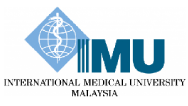An Exploratory Qualitative Study on Cyberbullying Experience from a Victim’s Perspective and Coping Strategies among Women with Heavy Social Media Usage
Authors: Rulin Lee, Alexius Weng Onn Cheang, Serena In.
ABSTRACT
Various studies have highlighted that women are at a higher risk of becoming victims of cyberbullying, with the severity of cyberbullying among women in many countries increasing and the urgency of having necessary intervention steps by governments and legal institutions in place. Nonetheless, the taboo of discussing mental health and individual struggles has hindered victims from disclosing their cyberbullying experiences they have gone through or are still currently experiencing due to the fear of being discriminated against. Therefore, this study aimed to explore cyberbullying from a victim’s perspective among women with heavy social media usage, as well as their coping strategies. A qualitative research design was utilised to understand the cyberbullying experience and coping strategies among five young women aged between 20 to 26 years old. Participants were recruited through social media. Collected data were analysed using thematic analysis which revealed three cyberbullying themes: “harassment”, “relational aggression” and “trolling”, three initial reaction themes: “anger”, “sadness” and “confusion”, two crossroad themes: “helplessness” and “sense of control” that either lead to the relapse of cyberbullying experience or coping strategies, and three coping strategy themes: “social coping”, “emotion-focused coping” and “problem-focused coping” and lastly, cognitive reappraisal. The findings provide comprehensive insights into understanding cyberbullying experiences and coping strategies among women with heavy social media usage. Understanding the effectiveness of various forms of coping allows mental health professionals to support their clients by finding out the implemented coping strategy and expanding on other forms of coping to build a more holistic support for their clients.
Keywords: coping strategies, cyberbullying from a victim’s perspective, heavy social media usage, women
Citations: IeJSME 2024 Vol 18 (1): 08-27

